For those who have solid wood floors Coming out of winter - when the heating in your home turns off - can come with surprises. That's when gaps appear between floor elements.
It can happen with a new floor, but it can also happen with an old floor that is supposed to have long since reached equilibrium in terms of drying. Yet these gaps still occur. And as well as being unsightly, they also collect dirt or become a nest for dust mites. What can we do?
How spaces appear between elements
Let's first clarify why gaps occur when talking about old wood that is supposed to be dry. Because there is a large variation in humidity. The very low humidity causes the wood to go out of the equilibrium established under normal temperature and humidity conditions and give up some of its own moisture to the surrounding environment.
Given the typical humidity in our homes of 40-60%, equilibrium moisture content of wood should be between 8 and 12%. In winter the house is heated and the heat supplied by the radiators is dry.
Even opening the windows does not bring humidity because the outside humidity is low in winter. Frost causes the moisture to freeze, making the air dry. That's why inside the house we feel our nostrils drying out and why outside, logs stored outside under sheds crack.
Low indoor humidity causes the wood to give up its moisture and shrink in size. This applies to all solid wood objects, including furniture. That's why doors don't always stay closed, edges start to show edges or cracks in the boards, furniture creaks and gaps start to appear in the parquet flooring.
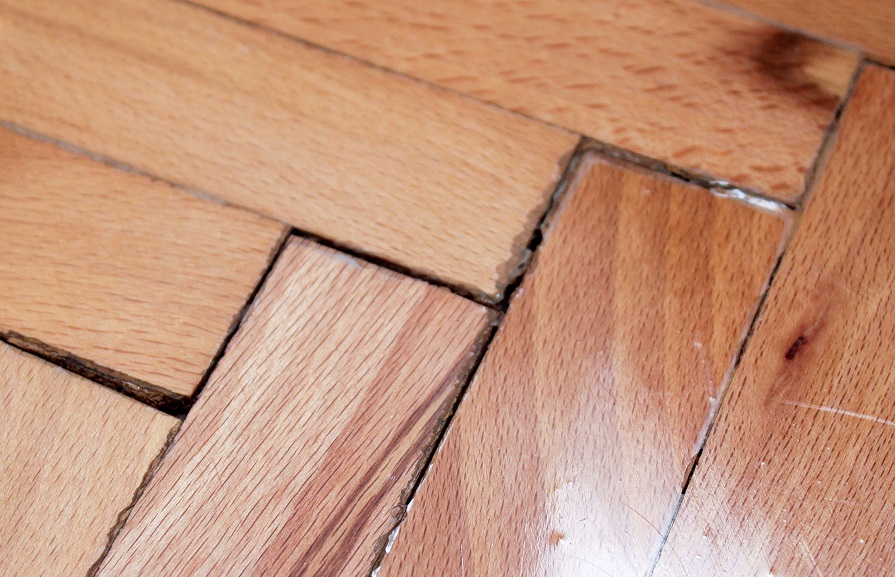
Before you start repairing the gaps between parquet elements
These spaces are of two kinds and it's good to figure out what you're dealing with before starting any repairs. Some are spaces seasonal that occur in winter.
But in the spring, when the dry heat stops, the indoor humidity level is restored and the wood returns to its original dimensions. The appearance of these gaps is normal and should not be repaired as the wood will crack and the repair material will be removed or the flooring will swell.
The second type are spaces permanent. These are actually the ones that need to be repaired. They can occur for many reasons, and the process is irreversible. The main reasons are:
- Wrong drying of the flooring. The flooring had higher than normal humidity and drying continued after installation.
- Insufficient acclimatization time before installation. Before mounting, the wood should be allowed a few days (7-10 days) to acclimatize to the new conditions and rebalance, avoiding noticeable variations.
- Incorrect mounting of one element relative to the neighboring element can result in gaps that do not disappear when the humidity returns to normal.
- Installation on an undried or insufficiently dry screed. Flooring that is continuously in direct sunlight can also have such problems.
Repairing these spaces can be done in several ways. Regardless of the method, the place is vacuumed very well of dust beforehand so that the materials used will have adhesion or go in very precisely.
If there are traces of dried adhesive, sand and remove them. It is recommended that repairs are carried out during periods of high atmospheric humidity (April, October) and only after making sure that the defects are not seasonal.
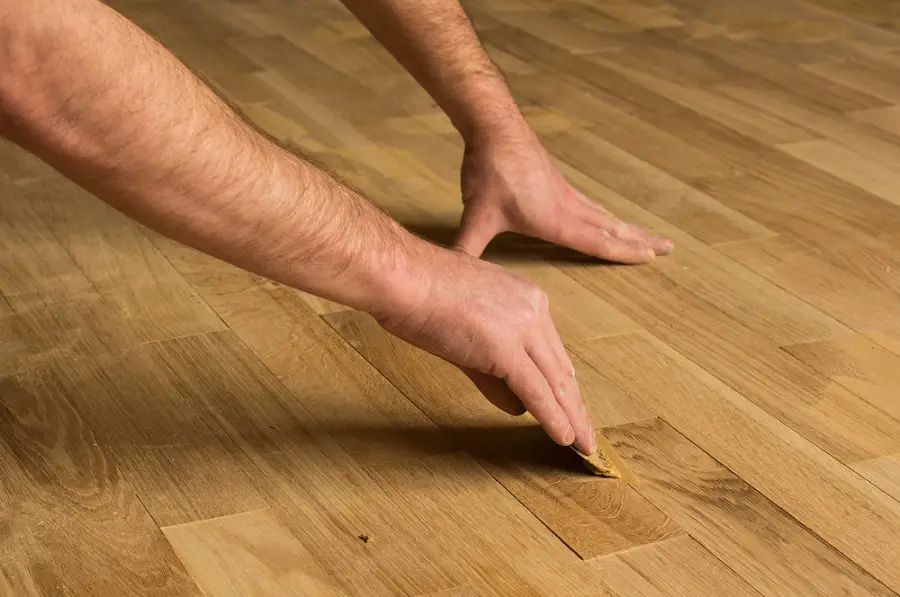
Repair methods
One method that applies to small spaces is grouting. It can be done with a homemade putty or bought materials. The easiest and most effective putty you can make yourself is made from wood dust and aracite adhesive (PVA). Use wood dust not sawdust because the mixture will be coarse. The mixture should have the consistency of a paste. For natural wood, the mixture can be used as it is, or it can be colored with a water-based dye to bring it to the color of the flooring.
Apply with a plastic spatula to avoid scratching the floor. Put on a larger amount as it will dry. After drying (24 hours to be safe) sand lightly to bring level. Use a fine abrasive sponge to avoid damaging the rest of the floor. Then wipe with linseed oil or wax (which you polish) to remove the matte effect from sanding.
You can also use special glues (acrylic or epoxy) which you can find commercially available in different colors. You can also use them if the spaces are a little larger as they do not crack when dry. Apply and level as above.
However, it is not a long-term safe solution. Repeated movements of the wood in winter, those that lead to seasonal gaps, can cause the putty to peel away from the edges of the elements and the gap to reappear.
A recommended method for large spaces is to use wooden shackles of the same essence and color as the flooring. Cut it to a size slightly larger than the space and knock it down. Adhesive may also be used for safety.
Pounding is done with a wooden hammer or a small piece of wood (if using a regular hammer) so as not to make marks on the flooring. Leave it until the next day (if using adhesive), then bring it level by planing and finish.
In the past it was used sfoară to close the gaps between floorboards. It is still used to repair floorboards in old houses without altering their charm. Before fitting, the space is thoroughly cleaned of old accumulated dirt and the string is painted. Only natural twines (jute, hemp, cotton) are used as synthetic ones cannot be colored.
After dyeing, allow the string to dry for 24 hours and then force it into the free space. Choose twine larger than the space. Use a sharp-edged tool - a spackle or even an expired card - to secure it.
A modern variant of using string is to use gaskets. Round elastic straps or V-shaped gaskets (which fold in the middle) can be used. These also need to be force-fitted. The materials can be found in DIY or specialist stores.
If the spaces are large and large, the flooring should be repaired (re-assembled), but first the reason for the defect must be traced so that the problems do not recur. Also make sure there are no seasonal defects. In this case, when the humidity returns to normal, the flooring will swell.
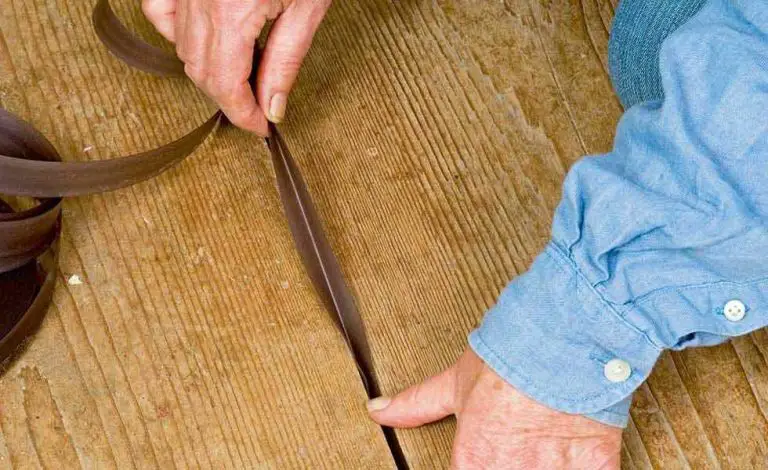


























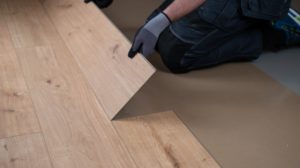




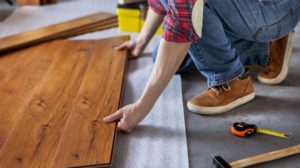




Good evening, I also have the parquet floor in the appearance shown by you. I disinfected with Spirt, then with Domestos, after drying I vacuumed very well and put putty of commercial wood joints. Now some cracks have appeared again and I haven't even laid the carpet yet because in January I took the carpet to the wash, because some black spots appeared on it, and then I realized that they were coming out of the parquet. I bought Bochemit and I've already given it 2 times but there are still some tiny black insects, which then get on the bed, get under my clothes and in my hair. I brought someone in and they gave it a universal cold mist.It stopped and they appeared again. I think it's some wood but not cavities because you can't hear them gnawing, more like little black dots even on new furniture and some round shapes on the table paint. Can you please give me some pointers? Thank you very much!
Hello!
I'm sorry you have such problems. It is difficult to identify the insect without a photo. Outside specialist sites even recommend an enlarged photograph, taken under a microscope, for identification. In my opinion they are mites that thrive on moisture. It is possible that the screed you have fitted was not dry enough or there is a source of moisture. Such insects grow very well in a damp environment. With the treatments you have solved the effect but not the cause. You should discover the nest (a wet, rotten wood).
Another insect that stays on wood is the woodpecker. It is hardy and has hidden nests. However, it does not roam around in very large groups. You can check by crushing one. It gives off a bad smell at the time.
Again, one cause may be dampness, which is beneficial to insect development, or heavily egg-infested wood that will need to be removed.
All the best!
Hello.
I have a 2bed apt - apx. 30 sqm. of parquet floor that is badly damaged. Therefore please advise me, if and how I can recondition the parquet (oak) plank by plank. Some boards are damaged and need to be replaced, others straightened (recalibrated) being more uneven areas, the space between the slats is f. large in some areas of the room now and cannot be just grouted and sanded.
The right thing to do would be to recalibrate one blade at a time.
I am looking for help, someone or a company in the V area of the country as close as possible to TM that can do this operation.
Hello.
I think it's far too hard and time-consuming a job to redo lamella by lamella. In my opinion, the flooring should be re-laid by a specialist and slats added to complete the surface (possibly replacing those that can no longer be saved). After that the whole floor is scraped to bring it to the same level and remove the damaged layer. There are companies that rent machines, but I advise you to work with a specialist. After scraping, sanding and sanding, apply parquet varnish, 2-3 coats, with drying and sanding in between. There are also water-based varnishes and this gets rid of the unpleasant smell in the house. At the end apply a coat of floor wax which you can polish with polish for gloss. Waxed floors are much easier to maintain.
For more details you have the link below.
Unfortunately I don't know anyone in the western area who could help you. But there are Facebook groups and if you say what you want, you will definitely find someone.
All the best!
https://revistadinlemn.ro/2018/02/13/raschetare-parchet-etape-si-realizare-intretinerea-parchetului/
Hello,
I was pleased to discover that there is also a concern for wood. I mention that I am a beginner, but passionate about wood 🙂
On the other hand, we face the opposite problem: the multi-layered flooring was installed last year. I think the humidity was very low in the house (20% if the hygrometer at Lidl is to be believed). The flooring was in the house for a month before we installed it. Now, when the humidity rises above 50% the floor rises in the middle of the hallway (the hallway is very long - 14 m and relatively narrow) next to a door.
As if it had no room to expand lengthwise. Anyway, it rises where the width of the hallway is minimal.
The floor is on the sponge, not glued.
Ideas?
Hello!
It is the usual phenomenon when the humidity rises or after floods. Probably not enough room under the baseboard to expand. The floor doesn't slam right into the wall. That area is hidden by the baseboard and the wood can "re-season" with changes in humidity. If the variation is large and the flooring swells, as in your case, the flooring should be beaten down. That is, remove a piece (if it is a small piece of parquet) and re-lay it so that the pattern has continuity and there is a small space under the baseboard for such movements. It is advisable to call in a parquet fitter.
The movement of the flooring also depends on the type of flooring used. The maiputin moves the laminate.
All the best!
https://revistadinlemn.ro/2017/03/23/ce-parchet-aleg-laminat-masiv-sau-stratificat/
Hello,
I have oak flooring installed in 2007 ,2 years ago it was scraped grouted and varnished with water based varnish by a company, my pb is the same as in the picture, between the joints remained hole or the old grout started to jump. They gave me the people who did my work and a repair putty for me to add in the places where the gaps appear, which I did and only now that one has cracked and is extremely unsightly in places it sticks to the socks/drawer. I called the company as I have a warranty ,I was told that the wood is working and that it may be from dry air ( I don't dispute that it is so I bought humidifiers and use them ) and they told me that what they can do is to come with a gel in places where there are problems ( I mention that they are pretty much everywhere ) this gel will go between the joints after which they will lacquer. I wanted to get another opinion, I mention that the floor was impeccable until two years ago, when there was no varnish in some parts of the rooms and I decided to do a reconditioning that frankly now leaves something to be desired.
Thank you in advance.
Hello!
From my point of view the cause would be the following: the old flooring was very dry. Certainly in the house the humidity was low and the lack of varnish made the moisture of the wood drop even more. At the time of the intervention with water-based varnish, the wood absorbed the water from the varnish and the humidity increased, the wood increased its volume. After the repair the wood returned to its old condition and started to lose moisture and shrink. This is how the gaps between the pieces of parquet appeared.
Certainly a big influence has been the dry over-winter heat. The park will certainly recover over the summer, so I don't think it's a good idea to do anything now. Let the winter pass and let the heat go, then do the repairs. I think there will be a lot less work.
If a lot of spaces remain, the floor must be beaten up again. You cannot putty the entire surface. If only a few gaps remain, they can be repaired with epoxy putty, with hardening (it does not shrink and is very resistant) or wood wedges can be beaten into the gaps.
Good luck!
Hello, what could I use to cut strips from the floorboards to fill the gaps?
Hello!
The solid or three-layer hardwood floorboards, from which you should cut the beams, are very hard and difficult to cut with an ordinary saw. You should call someone who has a circular table saw (hobby or professional) to cut them to the desired size. With such a circular saw, even very thin and evenly sized beams can be cut.
All the best!
https://revistadinlemn.ro/2018/08/29/cum-alegi-un-circular-cu-masa-industrial/
https://revistadinlemn.ro/2018/10/31/fierastrau-circular-fierastrau-pendular-sau-fierastrau-sabie-care-imi-trebuie/
Hello,
After this grouting, especially as it requires sanding, is it necessary to varnish the parquet?
The floor in my apartment has been fixed to stop scratching with a scraper , scraped , grouted (bona) and varnished with water based varnish in 2018 but small gaps have appeared between the boards and I have no way to move all the furniture in the house to varnish it and would like to know if I start repairing it.
Thank you,
Diana
Good evening!
If you use touch-up putty, there is no need. As far as I know Bona also has putties suitable for such repairs.
It is possible that the gaps are temporary. In winter, because of the dry heat, the humidity inside drops, the wood loses moisture and decreases in size. When the humidity returns to normal, so does the flooring and the gaps disappear. Therefore, if gaps have appeared during this period, I recommend leaving them until spring to see if they disappear. If not, seal them then.
All the best!